Publisher: Amy Marson Creative Director: Gailen Runge Acquisitions Editor: Roxane Cerda Managing Editor: Liz Aneloski Editors: Liz Aneloski, Cynthia Bix, S. Michele Fry, Monica Gyulai, Ann Haley, and Lynn Koolish Technical Editors: Carolyn Aune, Mary E. Flynn, Helen Frost, Ann Haley, Debbie Rodgers, Gailen Runge, Alison M. Schmidt, Amanda Siegfried, Julie Waldman, Janice Wray, and Nanette S. Zeller Cover/Book Designer: April Mostek Production Coordinator: Zinnia Heinzmann Production Editor: Jennifer Warren Illustrators: Rashida Coleman-Hale, Mary Flynn, Valyrie Gillum, Zinnia Heinzmann, Jenny Leicester, Tim Manibusan, Kathy McGee, Kirstie L. Petterson, and Aliza Shalit Photo Assistant: Mai Yong Vang Cover photography by Lucy Glover of C&T Publishing, Inc.
Instructional photos on pages 5559, 6167, 6977, 86, 87, 9294, 98101, 116, 119122, 124, 125, 127, and 130133 by Sue Kim Photography by Christina Carty-Francis, Page + Pixel (Nissa Brehmer), Diane Pedersen, Mai Yong Vang, and Michael Gardner of C&T Publishing, Inc., unless otherwise noted Published by Stash Books, an imprint of C&T Publishing, Inc., P.O. Box 1456, Lafayette, CA 94549 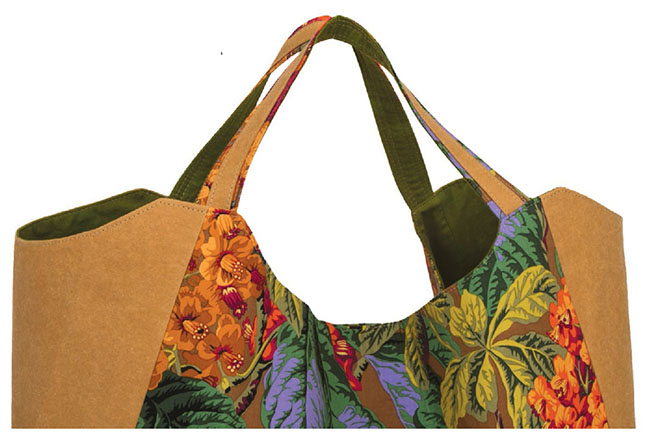
 kraft-tex. What is kraft-tex? ? kraft-tex is a paper-based, eco-friendly, and animal-friendly material that can be used in many of the same applications as fabric. It is extremely durable; easy to use; easy to care for; and a great substitute for leather, vinyl, or cork. In the Beginning In the spring of 2013, C&T Publishing introduced a new product into the craft and sewing marketplace called kraft-tex. This amazing material (made of paper!) quickly became a favorite of ours for bag making. kraft-tex is the perfect weight for adding structure, is easy to use (no special tools required), is easy to care for (machine wash and dry), and adds a unique leather-like texture to projects that looks fantastic! We also love its chameleon-like ability to mix and match with many different colors, types, and styles of fabric.
kraft-tex. What is kraft-tex? ? kraft-tex is a paper-based, eco-friendly, and animal-friendly material that can be used in many of the same applications as fabric. It is extremely durable; easy to use; easy to care for; and a great substitute for leather, vinyl, or cork. In the Beginning In the spring of 2013, C&T Publishing introduced a new product into the craft and sewing marketplace called kraft-tex. This amazing material (made of paper!) quickly became a favorite of ours for bag making. kraft-tex is the perfect weight for adding structure, is easy to use (no special tools required), is easy to care for (machine wash and dry), and adds a unique leather-like texture to projects that looks fantastic! We also love its chameleon-like ability to mix and match with many different colors, types, and styles of fabric.
You can combine kraft-tex with colorful quilting cottons, sturdy home decor fabric, denim, linen, canvasweve tried them all with great success! Needless to say, weve adored it from the beginning. Full disclosure: We both work at C&T Publishing (also home of Stash Books), so not only do we have access to plenty of kraft-tex but we also have the benefit of working with many fantastic designers. Putting kraft-tex together with bag patterns from our books was a no-brainer! For Sew kraft-tex Bags, weve selected some of our favorites and reworked them to incorporate kraft-tex. Sometimes it made sense to use a lot, and sometimes we only needed a little. Weve included notes with each pattern letting you know why we chose the bag, what design changes we made and why, as well as helpful hints and tips for that pattern. One of the things that was such a pleasant surprise was discovering the new bag that emerged when we gave the pattern a kraft-tex makeover.
For example, one of our favorites was the Mackenzie Messenger Bag. We loved the fabric-only version, but the kraft-tex took it to a whole other level. It played happily with the denim and vintage-inspired fabric, and the kraft-tex gussets added structure. The Natural color added the look of leather accents without the cost or hassle. Our aim with this book is to pass on our experience creating with kraft-tex to give you the tools you need to be successful in your own bag-making adventures! Weve chosen a variety of patterns with different looks and a range of skill levels that we hope will inspire you to incorporate some kraft-tex into your next bag-making project. How to Use This Book Not only did we choose bags that we thought would adapt well to kraft-tex, but we also selected them because we love the bags in their original all-fabric form.
Using the original pattern as a starting point, weve included notes and instructions for making the kraft-tex versionbut you can make the bag in either version (or both!). One major benefit to having access to both methods of construction is that it allows you to see the changes we made to each bag in order to add the kraft-tex. This will help you learn to convert your own favorite bag patterns. (See Converting Your Own Favorite Patterns, for more.) At the top of each pattern weve include the seam allowance (because the bags all have different original designers, the seam allowances vary between projects), skill level, and amount of kraft-tex used. The amount of kraft-tex used varies quite a bit, from small scraps in the Betty Pouch to large pieces of five different colors in the Tailynn Bag. In the projects, yardage for kraft-tex assumes a roll width of 1819.
Throughout the book, youll see our kraft-tex notes like this:  This is a kraft-tex note! These notes show you where weve added steps to instructions and/or included small changes to materials and cutting lists. If the materials list changed greatly between the fabric and kraft-tex versions, we included the entire materials list twice: once for the fabric version and once for the kraft-tex version. Note:Be sure to read through all the instructions for your project at least once, and be on the lookout for these kraft-tex notes! Converting Your Own Favorite Patterns Once youve made a few of our bags, we hope the experience you gain will give you the confidence to try your hand at incorporating kraft-tex into your own favorite bag patterns. Here are a few things weve learned along the way. In most cases you wont need or want to make the entire bag out of kraft-tex. (But theres always an exception to the rulesee the Hanna Picnic Basket, for a bag exterior thats made almost entirely out of kraft-tex.) Its also easier to manipulate kraft-tex when you sew kraft-tex to fabric, as the fabric provides some give when youre constructing the bag (for example, when youre turning the bag inside out). (But theres always an exception to the rulesee the Hanna Picnic Basket, for a bag exterior thats made almost entirely out of kraft-tex.) Its also easier to manipulate kraft-tex when you sew kraft-tex to fabric, as the fabric provides some give when youre constructing the bag (for example, when youre turning the bag inside out).
This is a kraft-tex note! These notes show you where weve added steps to instructions and/or included small changes to materials and cutting lists. If the materials list changed greatly between the fabric and kraft-tex versions, we included the entire materials list twice: once for the fabric version and once for the kraft-tex version. Note:Be sure to read through all the instructions for your project at least once, and be on the lookout for these kraft-tex notes! Converting Your Own Favorite Patterns Once youve made a few of our bags, we hope the experience you gain will give you the confidence to try your hand at incorporating kraft-tex into your own favorite bag patterns. Here are a few things weve learned along the way. In most cases you wont need or want to make the entire bag out of kraft-tex. (But theres always an exception to the rulesee the Hanna Picnic Basket, for a bag exterior thats made almost entirely out of kraft-tex.) Its also easier to manipulate kraft-tex when you sew kraft-tex to fabric, as the fabric provides some give when youre constructing the bag (for example, when youre turning the bag inside out). (But theres always an exception to the rulesee the Hanna Picnic Basket, for a bag exterior thats made almost entirely out of kraft-tex.) Its also easier to manipulate kraft-tex when you sew kraft-tex to fabric, as the fabric provides some give when youre constructing the bag (for example, when youre turning the bag inside out).
Take a look at the pattern youre considering and see what pattern pieces might be best made out of kraft-tex or where you might want to add a contrasting texture. Is there a side panel that would offer support to the bag? Could you substitute kraft-tex for a fabric panel as a design element? Take a look at the Valentina Bag. It alternates fabric with kraft-tex for a look thats totally different from the original. Would the durability of kraft-tex be a benefit to the bottom of the bag? See the Executive Insulated Lunch Purse as an example. It has a colorful, hard-wearing Designer kraft-tex base and its completely washable! Do you want to use just a little kraft-tex as an accent? Consider using a decorative strip in the handles, as fun patches or tags, or even on a flap, like we did on the Elva Bag. Keep in mind that gathers and other specialty effects that need a lot of flexibility (including pin tucks, ruching, and so on) are best left to the fabric portion of the design.
Also remember that although you dont need to interface the kraft-tex, it is often helpful to interface the fabric. But our best piece of advice? Be open to experimentation and trying new things! We were often pleasantly surprised at how some of the adaptations worked out even better than we expected. (Of course, we had a few fails as wellhence the warning about
Next page
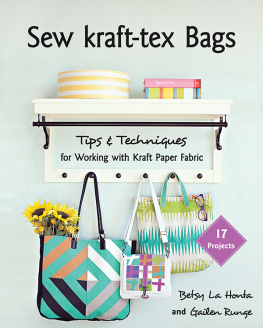
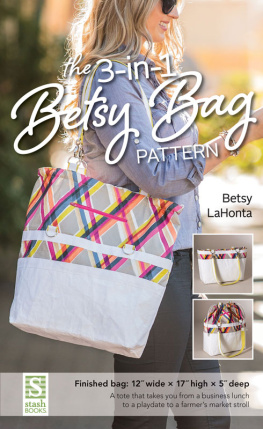
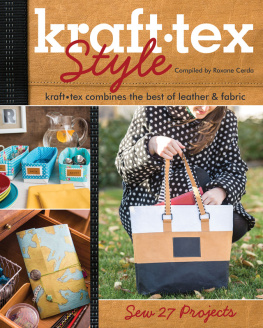

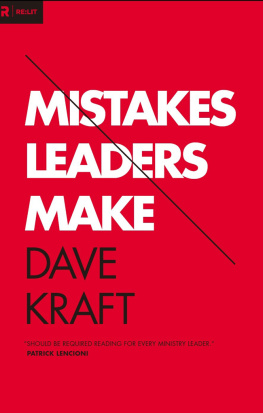
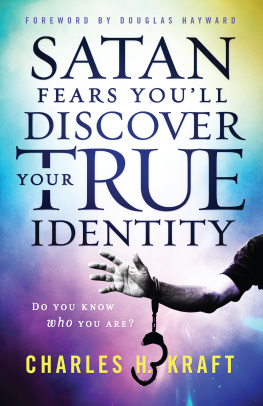

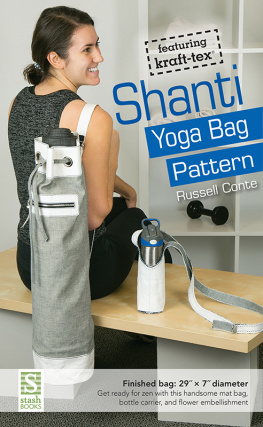
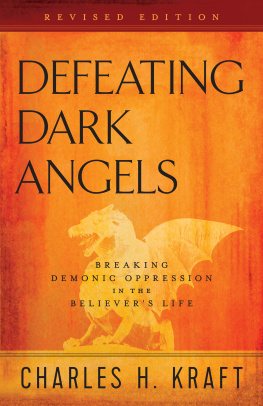

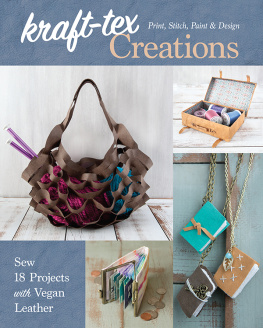

 kraft-tex. What is kraft-tex? ? kraft-tex is a paper-based, eco-friendly, and animal-friendly material that can be used in many of the same applications as fabric. It is extremely durable; easy to use; easy to care for; and a great substitute for leather, vinyl, or cork. In the Beginning In the spring of 2013, C&T Publishing introduced a new product into the craft and sewing marketplace called kraft-tex. This amazing material (made of paper!) quickly became a favorite of ours for bag making. kraft-tex is the perfect weight for adding structure, is easy to use (no special tools required), is easy to care for (machine wash and dry), and adds a unique leather-like texture to projects that looks fantastic! We also love its chameleon-like ability to mix and match with many different colors, types, and styles of fabric.
kraft-tex. What is kraft-tex? ? kraft-tex is a paper-based, eco-friendly, and animal-friendly material that can be used in many of the same applications as fabric. It is extremely durable; easy to use; easy to care for; and a great substitute for leather, vinyl, or cork. In the Beginning In the spring of 2013, C&T Publishing introduced a new product into the craft and sewing marketplace called kraft-tex. This amazing material (made of paper!) quickly became a favorite of ours for bag making. kraft-tex is the perfect weight for adding structure, is easy to use (no special tools required), is easy to care for (machine wash and dry), and adds a unique leather-like texture to projects that looks fantastic! We also love its chameleon-like ability to mix and match with many different colors, types, and styles of fabric. This is a kraft-tex note! These notes show you where weve added steps to instructions and/or included small changes to materials and cutting lists. If the materials list changed greatly between the fabric and kraft-tex versions, we included the entire materials list twice: once for the fabric version and once for the kraft-tex version. Note:Be sure to read through all the instructions for your project at least once, and be on the lookout for these kraft-tex notes! Converting Your Own Favorite Patterns Once youve made a few of our bags, we hope the experience you gain will give you the confidence to try your hand at incorporating kraft-tex into your own favorite bag patterns. Here are a few things weve learned along the way. In most cases you wont need or want to make the entire bag out of kraft-tex. (But theres always an exception to the rulesee the Hanna Picnic Basket, for a bag exterior thats made almost entirely out of kraft-tex.) Its also easier to manipulate kraft-tex when you sew kraft-tex to fabric, as the fabric provides some give when youre constructing the bag (for example, when youre turning the bag inside out). (But theres always an exception to the rulesee the Hanna Picnic Basket, for a bag exterior thats made almost entirely out of kraft-tex.) Its also easier to manipulate kraft-tex when you sew kraft-tex to fabric, as the fabric provides some give when youre constructing the bag (for example, when youre turning the bag inside out).
This is a kraft-tex note! These notes show you where weve added steps to instructions and/or included small changes to materials and cutting lists. If the materials list changed greatly between the fabric and kraft-tex versions, we included the entire materials list twice: once for the fabric version and once for the kraft-tex version. Note:Be sure to read through all the instructions for your project at least once, and be on the lookout for these kraft-tex notes! Converting Your Own Favorite Patterns Once youve made a few of our bags, we hope the experience you gain will give you the confidence to try your hand at incorporating kraft-tex into your own favorite bag patterns. Here are a few things weve learned along the way. In most cases you wont need or want to make the entire bag out of kraft-tex. (But theres always an exception to the rulesee the Hanna Picnic Basket, for a bag exterior thats made almost entirely out of kraft-tex.) Its also easier to manipulate kraft-tex when you sew kraft-tex to fabric, as the fabric provides some give when youre constructing the bag (for example, when youre turning the bag inside out). (But theres always an exception to the rulesee the Hanna Picnic Basket, for a bag exterior thats made almost entirely out of kraft-tex.) Its also easier to manipulate kraft-tex when you sew kraft-tex to fabric, as the fabric provides some give when youre constructing the bag (for example, when youre turning the bag inside out).